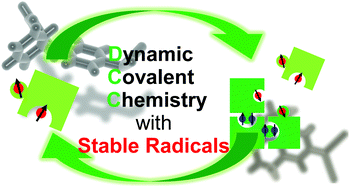Dynamic covalent bonds: approaches from stable radical species
Abstract
Reversible covalent bond formation/scission systems, referred to as Dynamic Covalent Chemistry (DCC), have received significant interest in view of the molecular systems, which offer feasible “error-correction” of the targeted chemical structures and the rearrangement of chemical bonds into the proper manner during the synthetic processes. DCC has been widely designed and developed with molecules in chemical equilibria where a set of reactants and a product are both in closed shell molecules. Within a few years, the concept of DCC systems has been extended to the formation of a covalent bond between a set of stable radicals, utilizing a common feature of radical species: the ease of the bond cleavage and formation. Generally, the coupling reactions among radical species are thermodynamically favorable in a down-hill manner with no or extremely small energetic barriers, and the barrier of the dissociation reactions can be minimized by properly designing the radical species. This review highlights the examples of the radicals showing reversible oligomerization–dissociation behavior, which have been or will potentially be utilized as building blocks in DCC, and the recent development of molecular self-assembly based on reversible radical coupling and homolytic cleavage reactions.

- This article is part of the themed collections: Mechanical Bond and Dynamic Covalent Bond and 2019 Materials Chemistry Frontiers Review-type Articles


 Please wait while we load your content...
Please wait while we load your content...